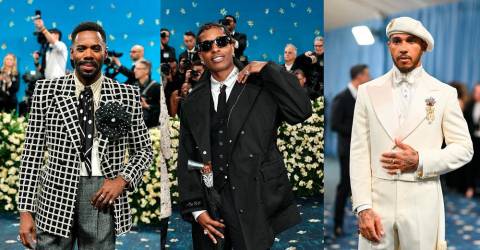ON May 5, the finest of the entertainment industry rocked up in their dandiest fits to wow the blue carpet at the Met (Metropolitan Museum of Art) Gala on Fifth Avenue, New York City. Often ridiculed for its superficiality, the charity event is not short of criticism and scrutiny, as last year’s gala received backlash for being tone-deaf to the political climate at the time (the Gaza genocide).
This year, the winds have shifted. While past galas often drew criticism, the 2025 event was met with praise. Some may see this as an effort by industry leaders to reshape the image of Hollywood and the elite, especially as public awareness of social disparities grows. That said, the 2025 Met was applauded for inclusivity and artistic ambition – and dare we say, this year’s gala sits at the same table as the 2018 Met, which was considered among the best. This year’s theme may have been rooted in performative activism, but its intention makes a poignant political statement as it gives a hypothetical seat at the very table where this community was once (read: still are) oppressed.
Themed Superfine: Tailoring Black Style, the Met took direct inspiration from Monica L. Miller’s 2009 book Slaves to Fashion: Black Dandyism and the Styling of Black Diasporic Identity and here is why it is a big deal.
Also read: Oscars highlights
Dandyism
With roots in the trans-Atlantic slave trade, the term “dandyism” began in the 18th century when Black servants in England were forced to wear gold, brass or silver collars with padlocks and fine livery, which reflected their “owners” wealth. However, much like any other fashion trend, the term was recontextualised – having a rebirth, ironically, in the land of freedom, the United States of America.
Today, “dandyism” connotes individuality and defiance, all thanks to a rebellious political movement in the 1920s to 1930s during the Harlem Renaissance – when Black people migrated to Harlem in New York City seeking better economic opportunities while fleeing racial violence. Dubbed the Black cultural mecca, it became nesting ground for African-American culture.
And where Black people were oppressed to silence, there they thrived in bold art, music, literature and fashion, reshaping the very fabric of American culture while challenging prejudiced beliefs. Bright colours, zoot suits, florals and stripes – think fitted but with soul. Dandyism saw a departure from its European “gentleman” tux origins as it took notes from traditional African motifs and prints.
From artistes such as Louis Armstrong to human rights activist Malcolm X, appearing dandy in a tailored suit was a weighty statement of identity and defiance against repression.
Also read: Grammy Awards highlights
2025 Met
For a fashion trend that became an expression of freedom and individuality, its flowers are long overdue. The line-up of mostly Black co-chairs, comprising Formula One driver Lewis Hamilton, rapper A$ap Rocky, actor Colman Domingo and artiste Pharrell Williams, for the first time ever is exactly why this year’s Met was a big deal.
For decades, the entertainment and art industries have benefitted from Black culture but have refused to give them their credit. Being typecasted as loud and boorish for simply expressing themselves, the Met’s decision to celebrate their individualism and the community’s culture is a step in the right direction.
The 2025 Superfine: Tailoring Black Style Met Gala was not just a celebration of black tailoring excellence but also the very community that shaped culture, arts, music and most importantly, individualism. Be it superficial or performative, one thing for sure is this will go down in history as a political statement that was made with much finesse and style.
Read More Details
Finally We wish PressBee provided you with enough information of ( Dandy statement )
Also on site :
- Trump Claims Qatari Plane to Temporarily Serve as Air Force One
- UnitedHealth CEO resigns, citing personal reasons
- Genome-wide association study of post-COVID-19 vaccination myocarditis and pericarditis

